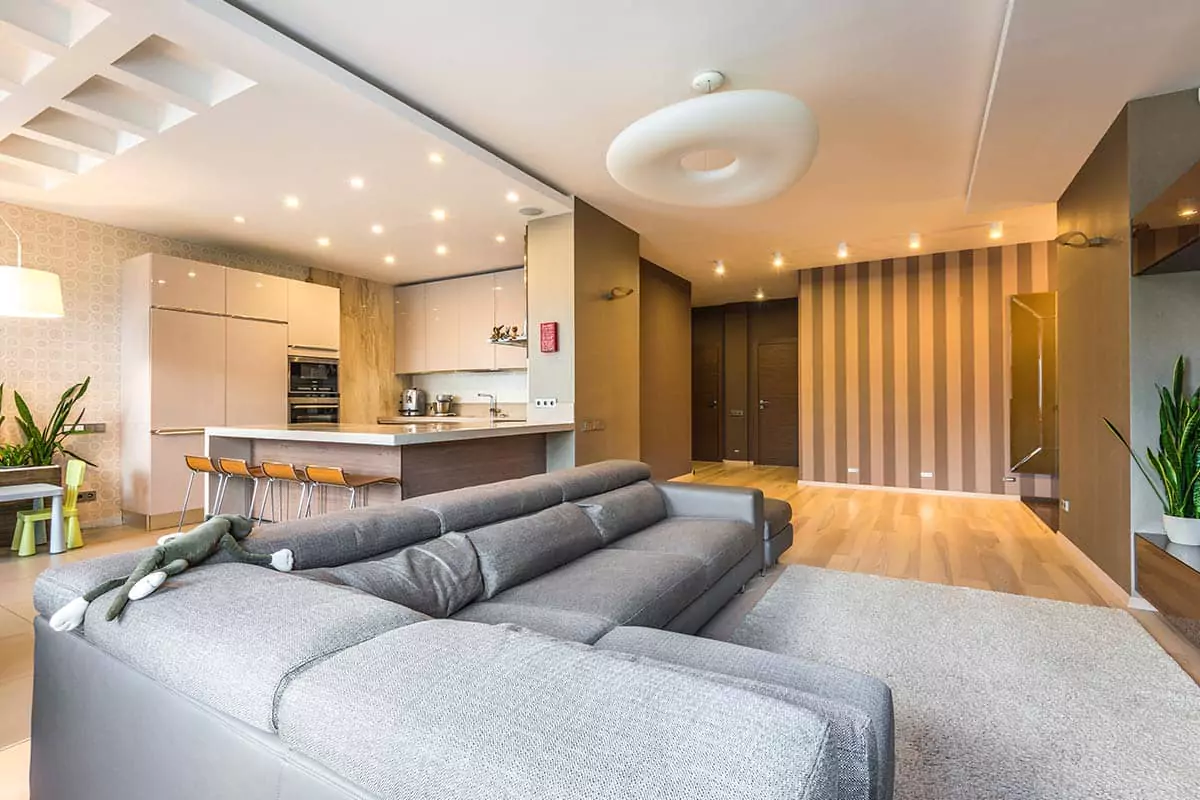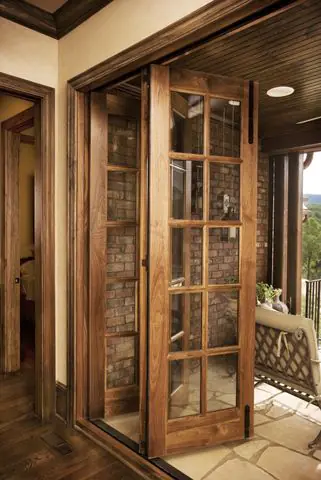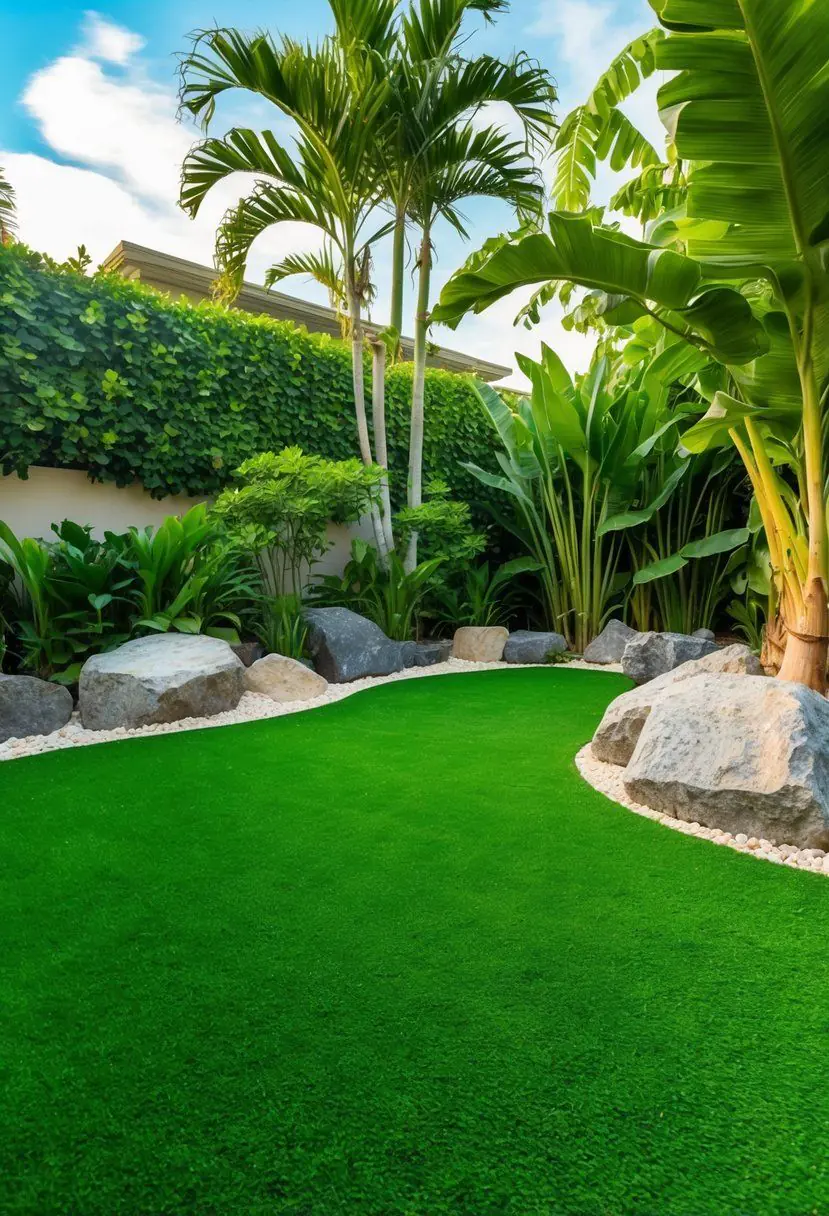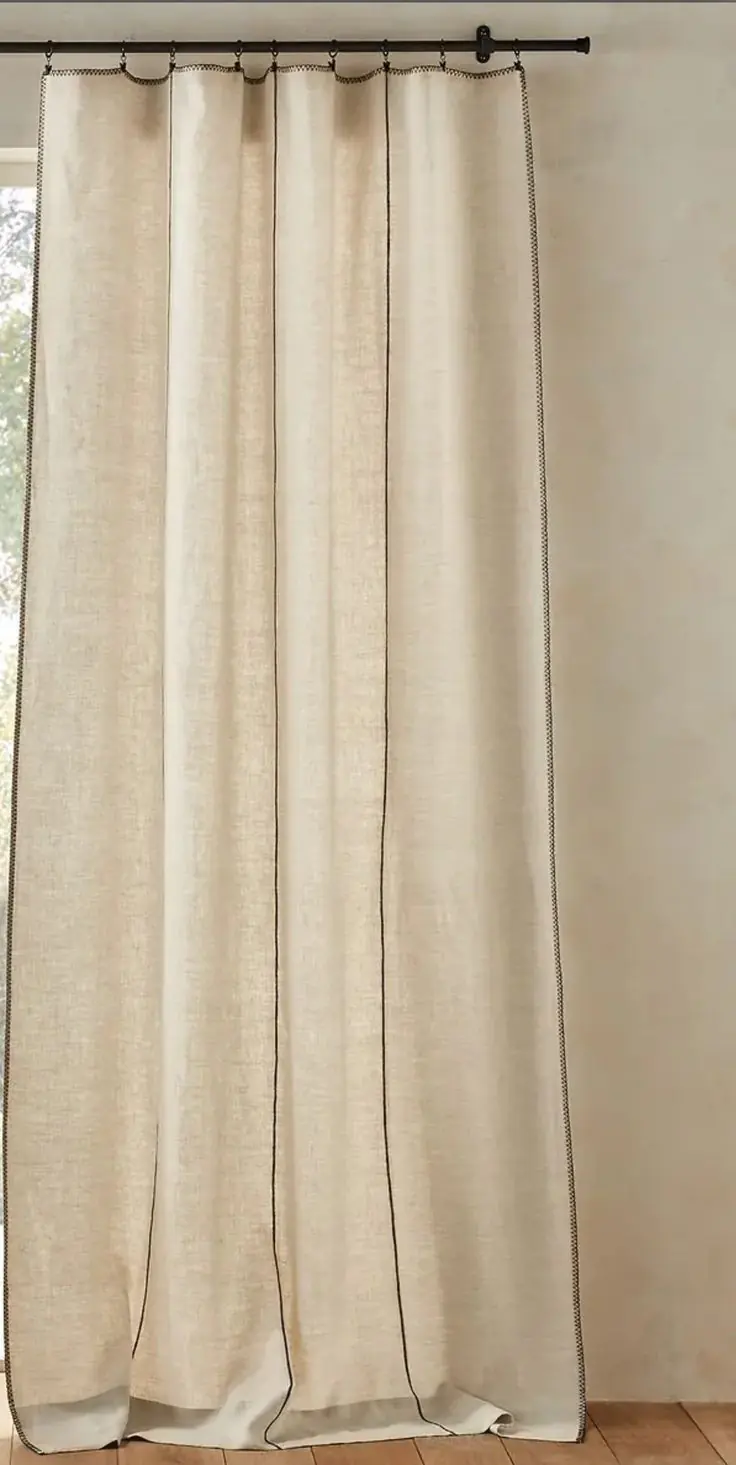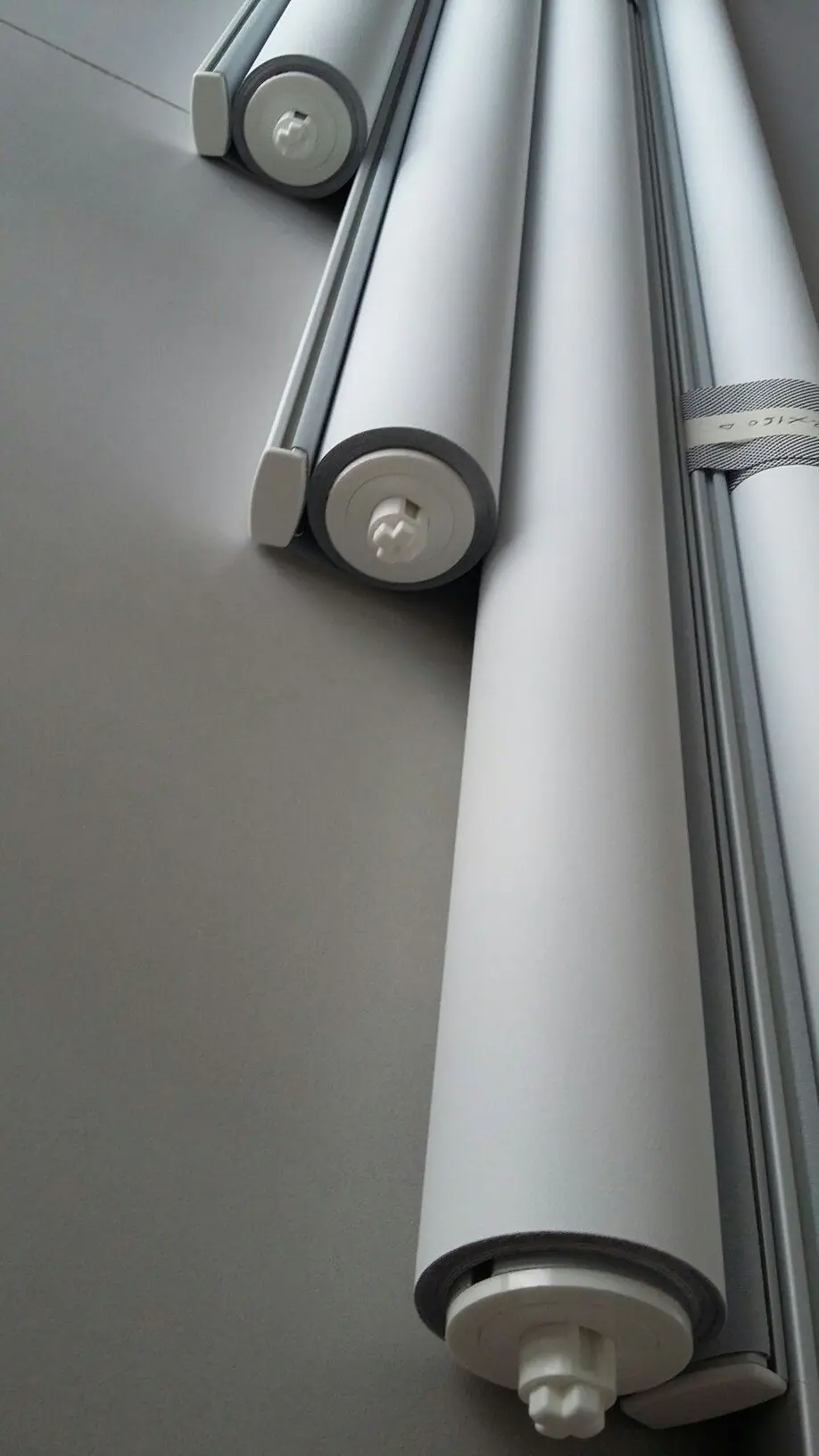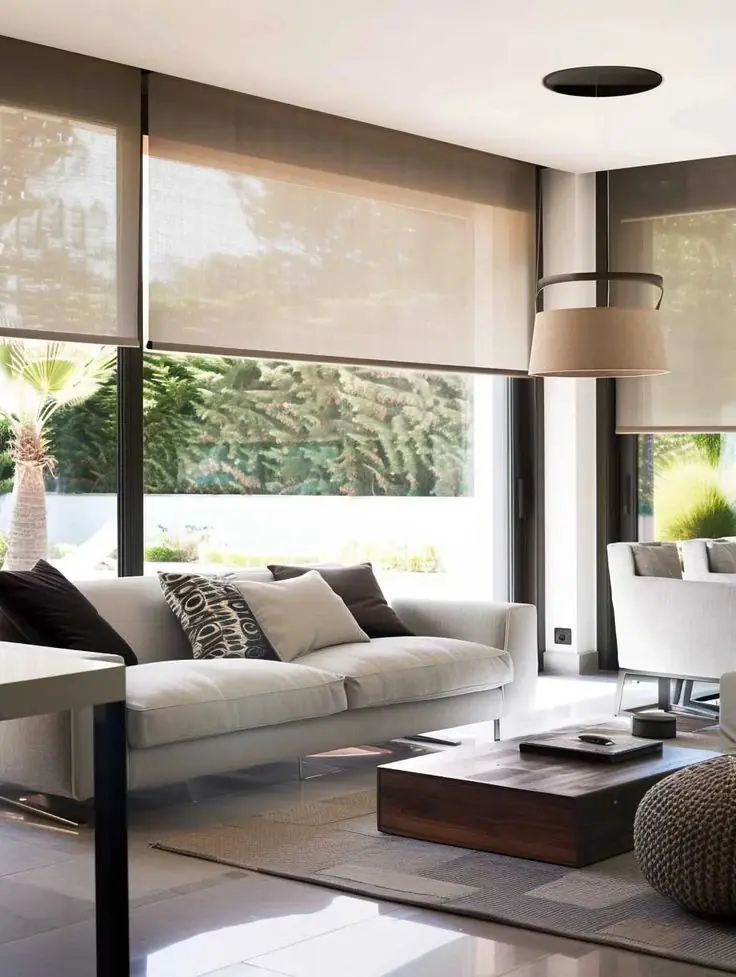It began with a evening breeze that smelled faintly of the sea and cardamom tea. A family in Jumeirah opened the living room to a play corner where building blocks had taken over a rug. With one smooth pull, the wall seemed to slide into pleats. The television stayed on one side, the chatter on the other, and everyone carried on without stepping over toys. The simple movement of an accordion door turned a noisy space into two calm rooms. This is how many stories of accordion doors dubai begin, not with grand plans, but with small moments when a room needs to change shape without calling a contractor or moving heavy furniture.
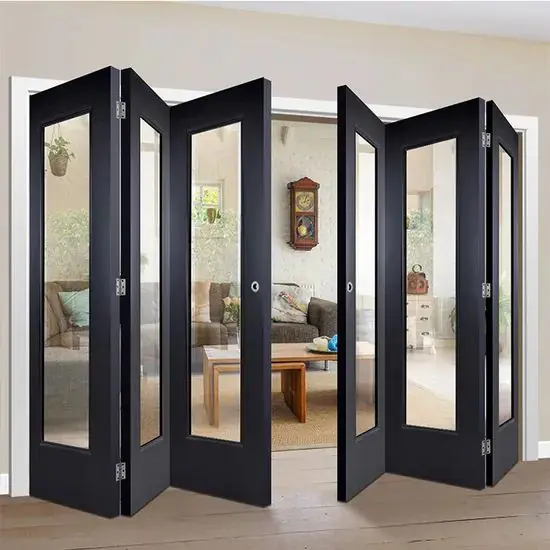
Across Dubai, Abu Dhabi, Sharjah, Ajman, Ras Al Khaimah, Fujairah, and Umm Al Quwain, homes and workplaces share the same daily rhythm. Mornings are quick, afternoons stretch, nights gather people together. We have glass that loves the sun, floors that echo, and layouts that want to be open yet private. The answer often hides in plain sight. A neat stack of panels on a ceiling track, a soft handle that draws across, magnets that kiss at the end, and a room that listens to the time of day. This guide walks through choices and checklists, all through the lens of accordion doors dubai, with local habits, AED prices, and centimeters that actually match your walls.
- What People Mean When They Say Accordion Doors
- Why Accordion Doors Dubai Suits UAE Life
- Where You See Them Most
- Materials That Make Sense in the Emirates
- Finish Choices and How They Affect Mood
- Everyday Hardware in Plain Terms
- How They Move, A Simple Walkthrough
- Planning With People in Mind
- Measuring in Centimeters, A Script You Can Trust
- When an Accordion Door is Better than a Slider
- Acoustic Comfort Without Mystery
- Climate and Dust Notes for the UAE
- Clear Pricing Anchors in AED
- Styles That Match Your Interior Story
- Case Stories From Around the Emirates
- Accordion Door, Sliding Door, or Curtain Wall
- Safety and Ease For Families
- Installation With Less Drama
- Care and Cleaning That Fit Busy Days
- What To Ask Before You Buy
- Commercial Notes For Managers and Fit Out Teams
- Common Search Phrases That Actually Help
- Numbers That Change Rooms
- Light, Air, and Energy
- When the Door Meets a View
- From Sketch to Habit
- When You Hear the First Click
What People Mean When They Say Accordion Doors
Some say folding partitions, some say concertina doors, some keep it short as accordion door. All describe a system of linked panels that travel along a head track and park in a compact stack. The panels can be rigid like timber or aluminium, semi rigid like PVC with ribs, or soft like thick acoustic fabric. An accordion door can close a small laundry niche or split an events hall. The common idea is simple. You change the shape of a room in seconds, then change it back without fuss.
Why Accordion Doors Dubai Suits UAE Life
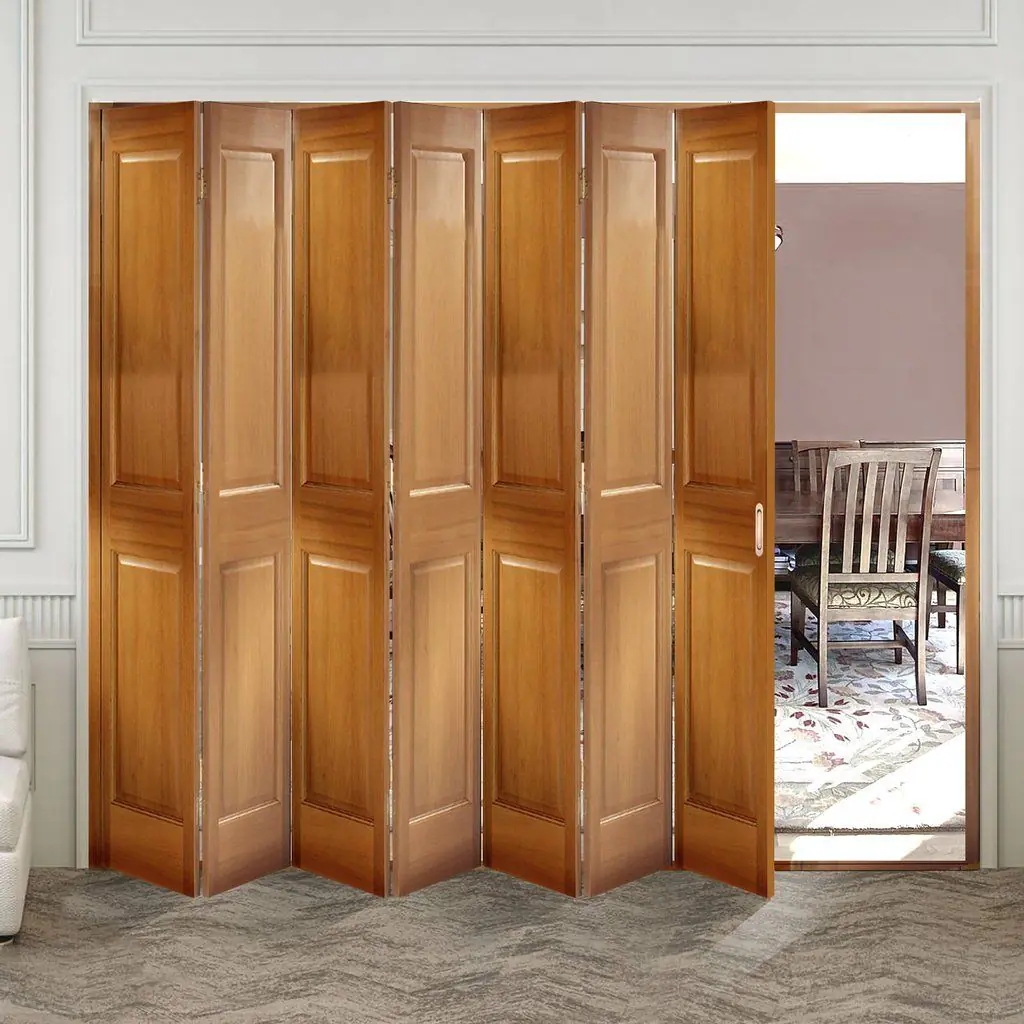
Our rooms work hard. A majlis hosts guests on Friday, then a study group on Saturday. An apartment living room is a play area at four and a quiet call corner at six. Cafes open to the sidewalk in winter and close tight in August. Many spaces want privacy at times and flow at others. Accordion doors dubai fits this pattern because panels move with one hand, tracks hold steady in concrete ceilings, and finishes survive dust and coastal air. The system speaks well with our interiors too. Clean lines, calm colors, and hardware that does not shout.
Where You See Them Most
- Homes. Between lounge and dining, to frame a majlis, across a hallway for air conditioning control, and around a walk in wardrobe where swing leaves steal floor area.
- Offices. Meeting rooms that expand for briefings and shrink for team huddles, training rooms that split into two classes, and hot desk zones that need a quiet corner without heavy walls.
- Schools and nurseries. Activity rooms that turn into nap rooms, art corners that hide paint time, and halls that open for assemblies.
- Clinics. Intake zones that become private bays, therapy rooms that need fast reconfiguration, and reception screens after hours.
- Cafes and restaurants. Seasonal openings toward terraces, small private dining areas, and service corridors that need neat closure.
Materials That Make Sense in the Emirates
Aluminium framed panels. Light, strong, and friendly in heat. Powder coat keeps color steady, marine grade finishes resist coastal air. Good for daily use and long spans that need a slim look.
Timber or MDF skins. Warm feel and rich texture. Works nicely in villas and majlis. Needs careful sealing at edges so mopping water does not find its way in. For high traffic, laminate faces protect against scuffs.
PVC or vinyl ribs. Budget friendly and easy to clean. Fine for utility areas, laundries, pantries, and storage corners. A smart choice when moisture is common.
Acoustic fabric or composite cores. For offices, schools, and hotels where sound bleed matters. Thicker cores add weight and seal better against frames.
Finish Choices and How They Affect Mood
White keeps rooms bright and blends with porcelain tiles. Light oak and ash lift spaces with sandy rugs. Walnut adds weight beside leather and brass accents. Black looks crisp with steel frames and micro cement. Wood effect laminates keep a classic look without asking for heavy maintenance. Textured matte surfaces hide fingerprints. In small rooms match the door to the wall for a quiet line. In public zones choose a calm contrast so people see where to reach for a handle.
Everyday Hardware in Plain Terms
- Head track. The rail that guides panels. Aluminium extrusions with smooth curves let rollers glide without chatter.
- Rollers and carriers. Small wheels inside the track. Sealed bearings roll longer between cleanings.
- Hinges or flexible links. Joints that let the door fold. On rigid panels you will see visible hinges, on PVC styles the link hides in the rib design.
- Meeting stile. The vertical edge where leaves meet. Often holds the lock or magnets.
- Sill and guide pin. Many systems hang from the head only and use a small bottom guide to keep the run straight. This means no heavy threshold, kinder to prams and wheelchairs.
- Seals and brushes. These close small gaps and tame sound and dust. In coastal buildings they help against fine sand.
- Locks. From simple latches to euro cylinder sets for security. Pick based on use, not habit.
How They Move, A Simple Walkthrough
Picture a calm sweep with one hand. The first panel leads, the next follows with a soft fold, and the set stacks on the chosen side. Good systems feel balanced. Weight sits mostly in the track above and a small guide below keeps drift in check. When you close, the magnets at the meeting stile pull the last gap tight. In rooms where you pass often, a daily access leaf can swing without moving the full span. This keeps movement quick during cooking, study time, or laundry trips.
Planning With People in Mind
Start with the busiest hour you live through. Draw it in your head. Children running through, groceries in hand, a laptop open on the dining table, a prayer rug rolled out near a window. Now draw the path people take. That path decides stack side, handle height, and whether a daily access leaf is worth the small extra cost. In shared homes, a clear rule helps. Leave the door half open by default, and close fully only when you truly need quiet. Small habits keep parts honest for years.
Measuring in Centimeters, A Script You Can Trust
- Measure the opening width at the head, mid height, and sill. Write down the smallest number. Real walls shift a little.
- Measure height at left and right. Write down the larger number. This avoids scraping.
- Check ceiling structure. Concrete holds anchors well, gypsum needs solid framing above the board. Ask for a quick peek through a service opening if you are unsure.
- Note switches, skirting, and furniture. The stack should not hide a light switch or hit a console table.
- Record clear headroom for the track and carriers. Most systems need 7 to 12 cm.
Label each opening. Lounge to dining, study corner, laundry niche. A neat list keeps installation day steady and cuts down on back and forth.
When an Accordion Door is Better than a Slider
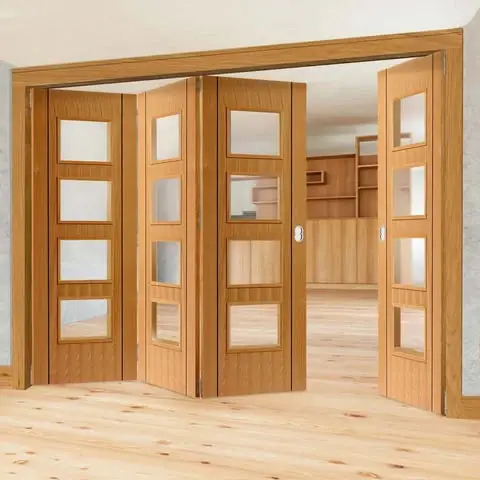
If you want the entire opening free, a slider always leaves part covered by the overlap. Accordion leaves park in a compact pile and clear almost the whole span. If you need a clean threshold for a wheelchair or a pram, many accordion systems avoid a tall bottom rail. If your plan wants occasional full privacy, thicker cores and edge seals beat most single sliders in sound control. On the other hand, if your view is the hero and you do not plan to open often, a simple slider may feel lighter to the eye. Pick with your routine, not only with catalog photos.
Acoustic Comfort Without Mystery
Sound takes the short road through gaps. A door with firm edge seals and a snug meeting stile trims that road. Panel thickness helps, but seals do the heavy lift. In offices, schools, and clinics ask for a tested acoustic spec. You might see numbers from small lab tests in decibels. Use them to compare within one supplier rather than across every brochure you find. The best test is your own ear in your own room after a trial fit or a visit to a reference site.
Climate and Dust Notes for the UAE
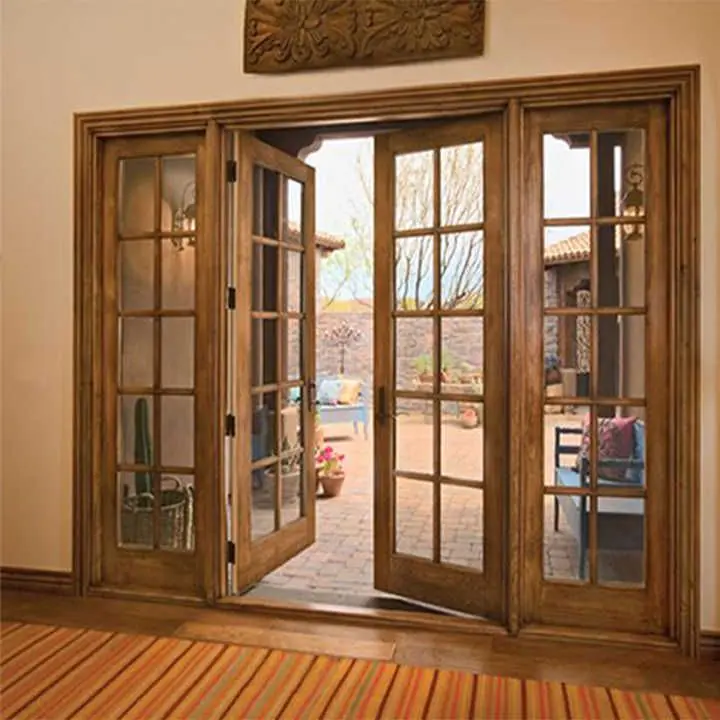
Sand travels easily and finds tracks. Pick carriers with sealed bearings and a track profile that is easy to wipe. A monthly pass with a dry cloth keeps glide honest. For coastal addresses, ask for corrosion resistant fasteners and powder coats rated for salty air. If the door sits near a balcony, a gentle door closer on the main leaf prevents slams when the wind turns. None of this is complicated, it is simply how parts live longer in our weather.
Clear Pricing Anchors in AED
Numbers help families plan. The ranges below reflect common sizes, steady hardware, and installation in standard concrete or block walls. Decorative trims, heavy acoustic cores, and complex shapes will sit above these brackets.
| Opening and use | Typical spec | Estimated range (AED) |
|---|---|---|
| 90 cm by 210 cm laundry niche | PVC ribbed accordion door, single stack, magnet close | 550 to 900 |
| 120 cm by 210 cm wardrobe | Vinyl panels on aluminium track, soft pull handle | 800 to 1,400 |
| 240 cm by 240 cm lounge divider | Laminate faced rigid panels, ceiling track, brush seals | 2,400 to 4,200 |
| 360 cm by 260 cm meeting room | Composite acoustic core, meeting stile lock, trim covers | 6,500 to 11,500 |
| Restaurant bay 500 cm by 300 cm | Aluminium framed panels, marine coat, floor guide pin | 12,000 to 18,000 |
These ranges include supply and fit across most urban sites. Stairs without lift access, special color runs, and after hours work affect totals. A short visit confirms the exact figure in AED.
Styles That Match Your Interior Story
Flat matte. Modern apartments with porcelain tiles and slim black frames look calm with plain matte panels in white, stone, or charcoal. Handles can match or disappear.
Timber look. Villas and majlis rooms often prefer oak, ash, or walnut prints. Ribs can be slim to keep the line gentle. The pattern repeats in a way that does not fight natural floors.
Glass inserts. Frosted strips bring light through a corridor while still guarding privacy. Clear bands at eye level help in cafes where staff want a view of the floor.
Patterned textiles on acoustic cores. In schools and clinics these soften both sound and look. Choose calm tones that clean easily.
Case Stories From Around the Emirates
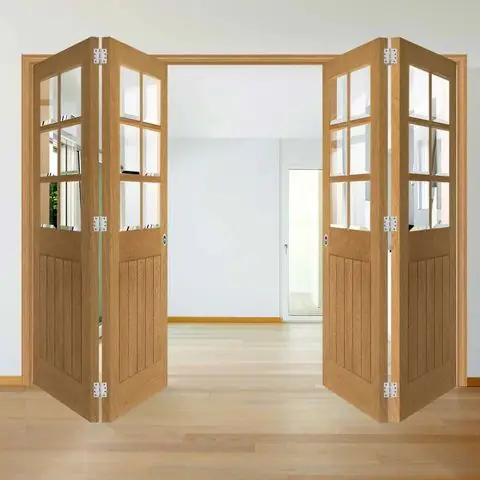
Al Nahda apartment. A couple working from home needed a quick switch from shared desk to private call. A 220 cm opening between lounge and a small study got a rigid panel accordion door in warm beige. Calls became calmer, and the door parked so neatly that weekend movies felt open again.
Mirdif villa. A majlis that faced the dining room felt busy during family gatherings. The family added a 300 cm set with laminate faces and brush seals. Friday lunch could now serve in peace while conversation stayed on the other side. Children learned to slide the daily access leaf rather than push and pull at a heavy swing door.
Yas Island clinic. Two therapy rooms were often joined for group work. An acoustic core system with a smooth meeting stile allowed staff to change the plan in under a minute. The calm that followed was not only about sound, it was about staff not worrying about fuss each time a schedule changed.
JLT cafe. A cafe wanted a winter opening that closed cleanly in summer. An aluminium framed set with a low guide and marine coat solved the shift. Even on dusty days, a quick track wipe kept the glide sweet.
Accordion Door, Sliding Door, or Curtain Wall
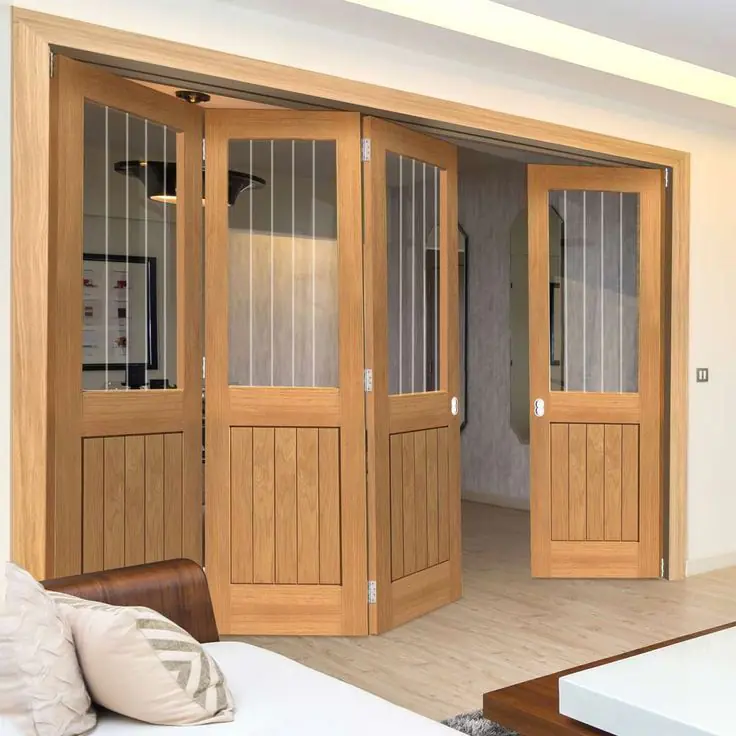
If you want soft zones rather than full privacy, a double curtain track can be friendly. If you want a clear opening with a strong edge, an accordion door wins. If your view is the lead actor, a slider in a fixed glass wall looks quiet. The choice is not about fashion. It is about what you do in the room. A study corner near a kitchen needs a firm line against cooking clatter. A bedroom that borrows space from a lounge needs calm without heavy frames. A cafe that lives by seasons needs speed and easy care.
Safety and Ease For Families
Choose finger safe hinge profiles where small hands live. Keep handle height above toddler reach. Add a gentle closer on a daily leaf where wind can pull. Avoid tall thresholds in senior homes. In schools and clinics, ask for rounded edges and locks that can be opened from the outside with a coin in case a child hides inside by mistake. These are simple notes that make real difference.
Installation With Less Drama
Good teams arrive with a level that they trust, anchors suited to concrete, and patience for small shims where ceilings dip. A calm install takes one to three hours for most openings. Panels hang, carriers adjust, seals press, and the final sweep sets the habit. The handover should include a simple lesson. How to park the stack without a clack, how to clean the track, how to adjust a striker plate if close becomes loose after a season.
Care and Cleaning That Fit Busy Days
- Dust the head track once a month with a dry cloth. Vacuum if grit gathers.
- Wipe panels with mild soap and water. Avoid harsh solvents that dull finish.
- Check seals every six months. Replace if they harden or split. It is quick and keeps sound and dust down.
- Listen to rollers. If you hear a squeak, a carrier may want a small adjustment. Call before the squeak becomes a drag.
What To Ask Before You Buy
- How wide is the stack at rest. Will it hide a switch or bump a cabinet.
- Can I add a daily access leaf at either end. Which side suits my path.
- What is the tested acoustic difference between the basic and thicker cores.
- What finish cleans easiest in my room. Do you have a sample I can try with a wet cloth.
- What is the lead time for my chosen color. Can you match a paint swatch or floor sample.
- How do you anchor to gypsum. Is there timber or steel above the board.
Commercial Notes For Managers and Fit Out Teams
Fire exits must remain clear and rated doors cannot be replaced with non rated partitions in paths of egress. In restaurants and cafes, plan for staff flow with a swing leaf and keep clear openings at least 90 cm for trays and trolleys. In offices, pair the partition with ceiling baffles if you want extra acoustic control. In schools, hinges and carriers should resist rough handling. Build a small maintenance plan into your calendar. Wipe tracks at the start of each term, check seals at the end of each term.
Common Search Phrases That Actually Help
People type accordion door dubai when they want local suppliers who speak in AED and know building rules. Others search accordion door first to read generic how to pages, then add city names. These simple phrases help you find showrooms with panels you can touch and carriers you can hear glide. Use them to gather options, then go back to your drawing and your routine before making a choice.
Numbers That Change Rooms
Leave at least 60 cm of clear wall on the stack side for common room widths. For very wide spans above 4 meters, plan intermediate carriers and check that the ceiling is true through the run. Allow 7 to 12 cm headroom for the track. Keep handle height between 90 and 110 cm for adult reach while staying polite to wall art. On acoustic cores, expect weights from 18 to 35 kg per running meter. A strong head fixing matters, yet most concrete slabs in the UAE welcome this load without stress.
Light, Air, and Energy
Accordion partitions help air conditioning work smarter because you can shrink a cool zone during peak heat. In a tower, closing the lounge while the kitchen runs keeps the compressor from cycling endlessly. In a villa, zoning the family area during afternoon homework lets one AC rest. Light behaves better too. Frosted inserts calm glare in corridors. Clear inserts keep supervision easy in nurseries and cafes. Small choices, steady gains.
When the Door Meets a View
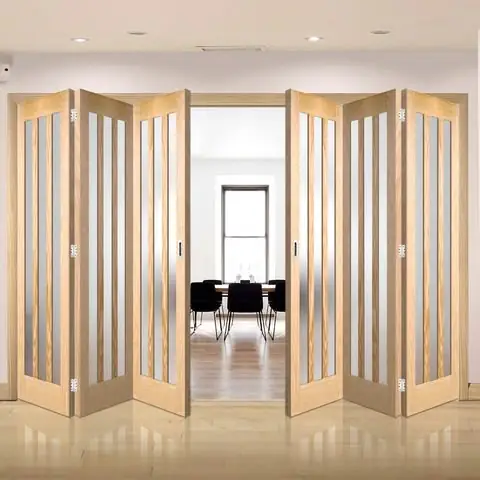
Not every opening wants to be closed daily. Some rooms are built for a view and quiet watching. In those cases pick a finish that disappears against the frame so the stack melts away when parked. If art lives on a wall near the opening, keep panel ribs slender so shadows do not compete with the picture. If the door backs a bookcase when stacked, add a slim bumper strip so the last leaf rests without marking the shelf.
From Sketch to Habit
Take a sheet of paper and draw your opening. Mark the swing of a daily leaf and the resting place of the stack. Draw your furniture. Place the console table, the prayer rug, the stroller. Now draw your own movement through the space. Where you walk twice a day is more honest than what looks nice in a showroom. Accordion doors dubai is not about a gadget. It is about rooms that behave the way you live. The drawing helps you see that truth before the first screw goes in.
When You Hear the First Click
On handover day you will hear three sounds. The light roll of carriers, the soft touch of seals, and the click at close. That click is the sound of a plan that finally meets the room. People always smile at that moment. Children learn the sweep and feel proud to close a space for their games. Guests understand where to sit without being told. You find yourself using the space differently. A room that was once a corridor becomes a reading corner. A busy lounge becomes a quiet office for an hour. The door is not the hero. Your day is.
There comes a evening when you slide the panels with one calm pull and the house answers by settling down. Music on one side, a story on the other, and the smell of dinner from the kitchen. This is the real promise of accordion doors dubai. Rooms that bend to your day, walls that move when life asks them to, and a home that feels ready for guests or quiet at any hour. If you would like a hand with samples, careful measurements, and a clean fit, speak with Instylea and watch how a neat stack of panels can teach a familiar room a kinder way to live.
Frequently Asked Questions (FAQs)
Explore the finest interiors in the UAE market. Step inside stunning spaces. browse now!
